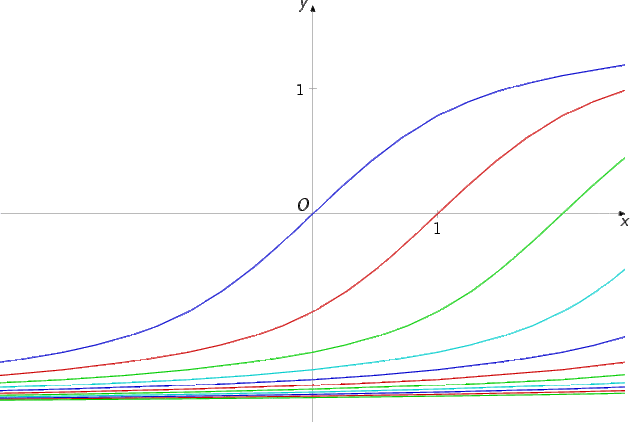Exercice 31
Partie
Question
Étudier la convergence uniforme de la suite de fonctions (\(f_n\)) définies par \(f_n(x)= arctan(x - n)\).
Solution détaillée
Pour tout n de \(\mathbb{N}\), étudions la fonction \(\phi_n\) définie sur \(\mathbb{R}\) par \(\phi_n(x) =\bigg |arctan(x-n) + \frac{\pi}{2} \bigg |\)
On a, pour tout u réel, donc, pour tout x réel, \(-\frac{\pi}{2}< arctan(u) < \frac{\pi}{2}\) donc, pour tout x réel, \(\phi_n(x) = arctan(x-n) + \frac{\pi}{2}\)
\(\phi_n(x)\) est continue et dérivable sur \(\mathbb{R}\) et \(\phi_n'(x) = \frac{1}{1 + (x - n)^2} > 0\) .
\(\phi_n(x)\) est donc strictement croissante sur \(\mathbb{R}\) .
. \(\displaystyle \lim_{x \rightarrow -\infty } \phi_n(x) = 0\).
. \(\displaystyle \lim_{x \rightarrow +\infty } \phi_n(x) = \pi\).
Le problème pour la convergence uniforme de (\(f_n\)) apparaît donc lorsque x est au voisinage de \(+\infty\). L'idée est alors de regarder ce qui se passe sur ] \(-\infty\), a] (pour tout a réel).
\(\phi_n(a) =arctan(a-n) + \frac{\pi}{2}\). Ceci prouve que \(\underset{x \in ]-\infty, a]}{sup} \bigg \{ |arctan(x-n ) + \frac{\pi}{2}| \bigg \}\phi_n(x) =arctan(a-n) + \frac{\pi}{2}\)
\(\displaystyle \lim_{n \rightarrow +\infty } arctan(a-n) + \frac{\pi}{2} = -\frac{\pi}{2} + \frac{\pi}{2} = 0\) ce qui prouve que la suite de fonctions (\(f_n\)) converge uniformément sur ] \(-\infty\), a] vers la fonction constante \(x \rightarrow - \frac{\pi}{2}\)
La suite de fonctions (\(f_n\)) converge uniformément sur ] \(-\infty\), a] vers la fonction constante \(x \rightarrow - \frac{\pi}{2}\)
